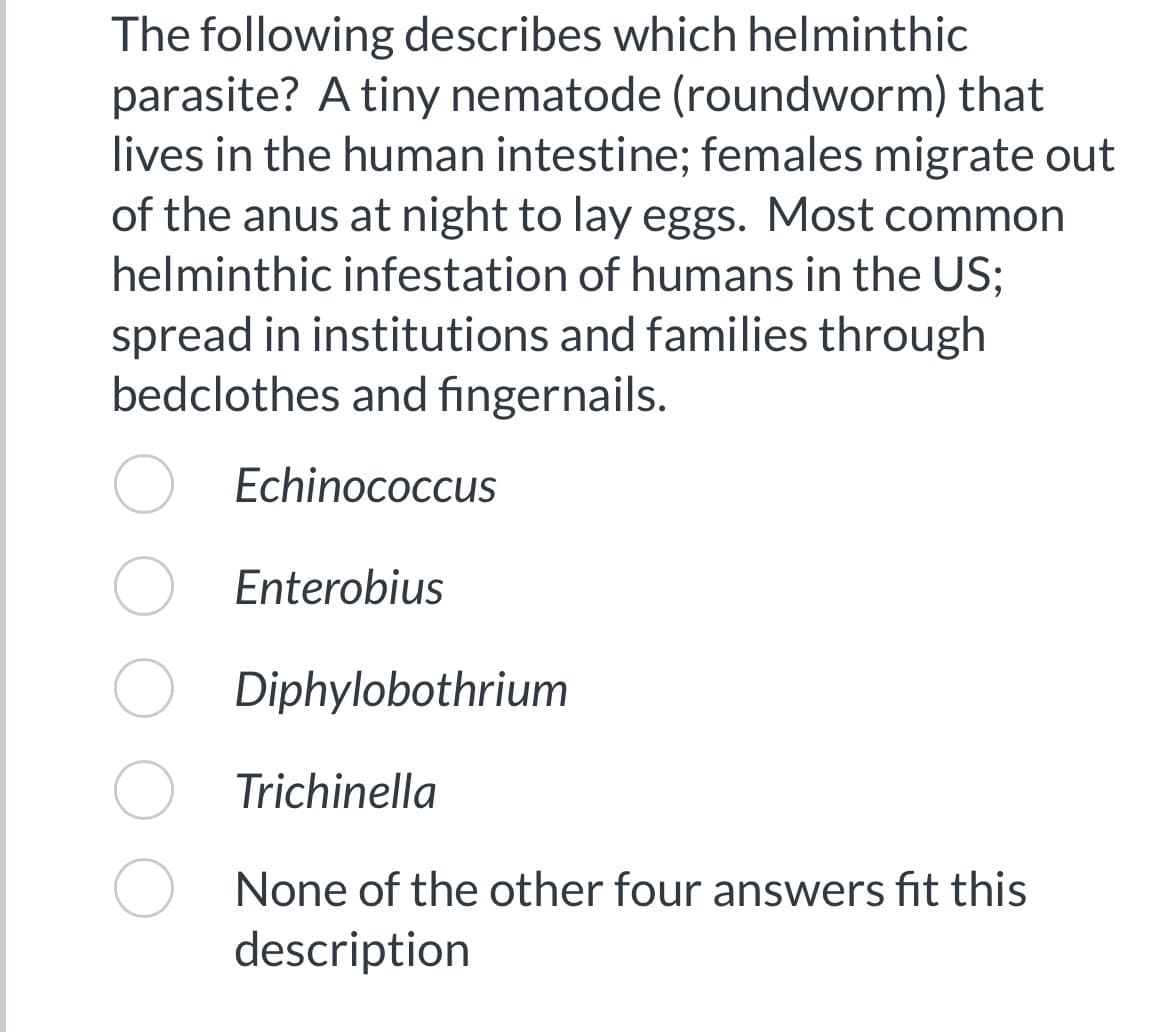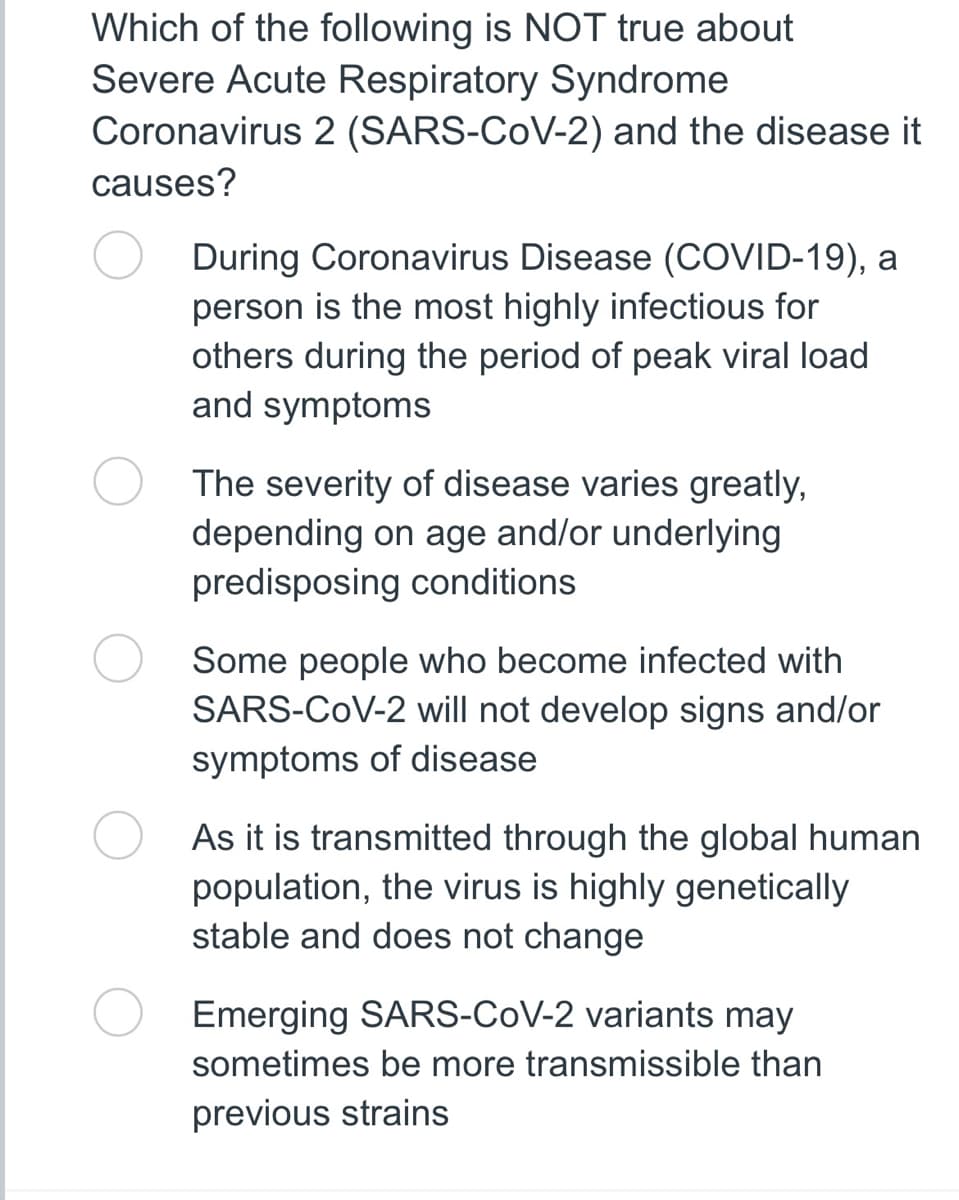The following describes which helminthic parasite? A tiny nematode (roundworm) that lives in the human intestine; females migrate out of the anus at night to lay eggs. Most common helminthic infestation of humans in the US; spread in institutions and families through bedclothes and fingernails. Echinococcus Enterobius Diphylobothrium Trichinella None of the other four answers fit this description
The following describes which helminthic parasite? A tiny nematode (roundworm) that lives in the human intestine; females migrate out of the anus at night to lay eggs. Most common helminthic infestation of humans in the US; spread in institutions and families through bedclothes and fingernails. Echinococcus Enterobius Diphylobothrium Trichinella None of the other four answers fit this description
Biomedical Instrumentation Systems
1st Edition
ISBN:9781133478294
Author:Chatterjee
Publisher:Chatterjee
Chapter17: Instrumentation In Intensive Care Units
Section: Chapter Questions
Problem 1RT
Related questions
Question

Transcribed Image Text:The following describes which helminthic
parasite? A tiny nematode (roundworm) that
lives in the human intestine; females migrate out
of the anus at night to lay eggs. Most common
helminthic infestation of humans in the US;
spread in institutions and families through
bedclothes and fingernails.
Echinococcus
Enterobius
Diphylobothrium
Trichinella
None of the other four answers fit this
description

Transcribed Image Text:Which of the following is NOT true about
Severe Acute Respiratory Syndrome
Coronavirus 2 (SARS-CoV-2) and the disease it
causes?
During Coronavirus Disease (COVID-19), a
person is the most highly infectious for
others during the period of peak viral load
and symptoms
The severity of disease varies greatly,
depending on age and/or underlying
predisposing conditions.
Some people who become infected with
SARS-CoV-2 will not develop signs and/or
symptoms of disease
As it is transmitted through the global human
population, the virus is highly genetically
stable and does not change
Emerging SARS-CoV-2 variants may
sometimes be more transmissible than
previous strains
Expert Solution
This question has been solved!
Explore an expertly crafted, step-by-step solution for a thorough understanding of key concepts.
Step by step
Solved in 3 steps

Knowledge Booster
Learn more about
Need a deep-dive on the concept behind this application? Look no further. Learn more about this topic, biology and related others by exploring similar questions and additional content below.Recommended textbooks for you



